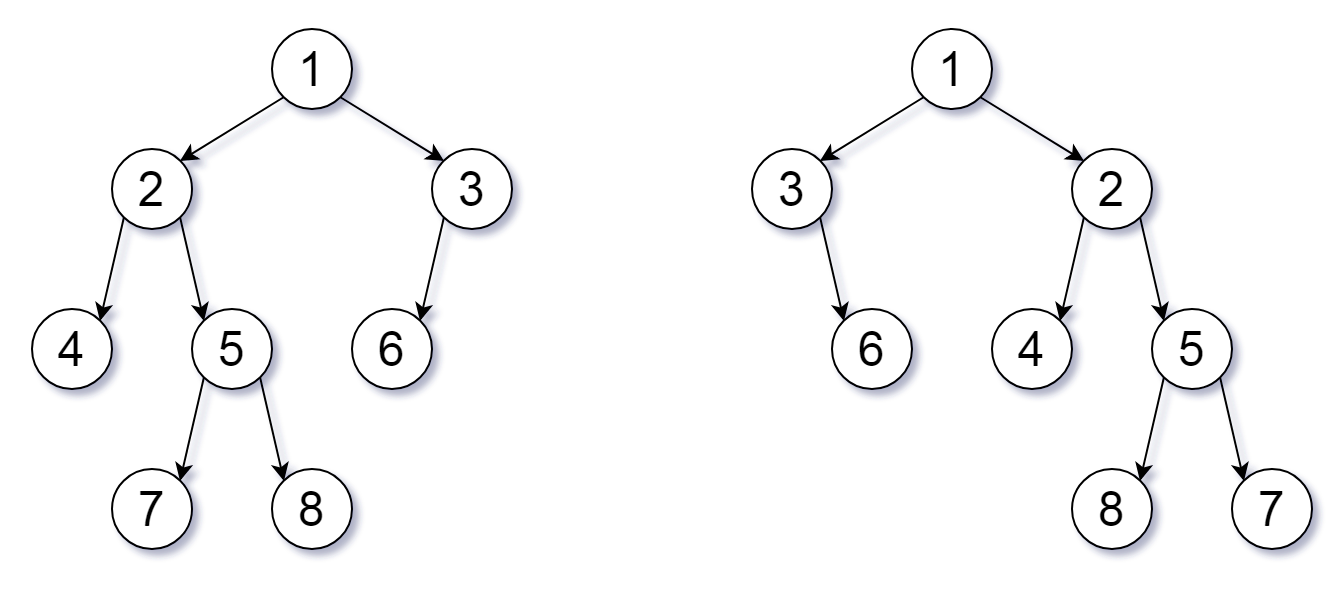951. Flip Equivalent Binary Trees
951. Flip Equivalent Binary Trees
For a binary tree T, we can define a flip operation as follows: choose any node, and swap the left and
right child subtrees.
A binary tree X is flip equivalent to a binary tree Y if and only if we can make X equal to Y after some
number of flip operations.
Write a function that determines whether two binary trees are flip equivalent. The trees are given by root
nodes root1 and root2.
Example 1:
Input: root1 = [1,2,3,4,5,6,null,null,null,7,8], root2 = [1,3,2,null,6,4,5,null,null,null,null,8,7]
Output: true
Explanation: We flipped at nodes with values 1, 3, and 5.
Flipped Trees Diagram

Note:
Each tree will have at most 100 nodes.
Each value in each tree will be a unique integer in the range [0, 99].
- Easy Divide and Conquer
Another approach: Since the values in the tree are unique. We can also convert two trees to a canonical representation, then compare equality. (eg. always visit the smaller node of a pair of sister nodes)
public boolean flipEquiv(TreeNode root1, TreeNode root2) {
if(root1 == null && root2 == null) return true;
if(root1 == null || root2 == null || root1.val != root2.val) return false;
return flipEquiv(root1.left, root2.left) && flipEquiv(root1.right, root2.right)
|| flipEquiv(root1.left, root2.right) && flipEquiv(root1.right, root2.left);
}